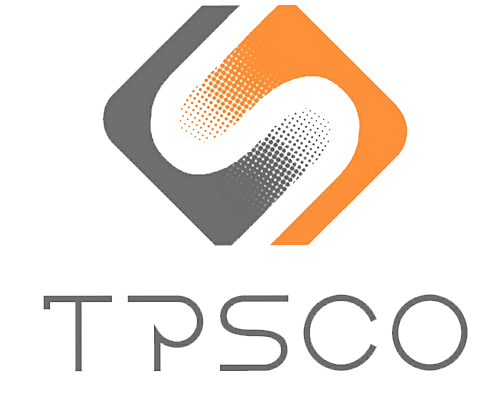Mono ethylene Glycol (MEG):
Mono ethylene Glycol (MEG) obtained from the reaction of ethylene oxide and
water. It is a clear, transparent and odorless liquid that can be mixed with
water in any proportion.
Application MEG :
Polyester :
Polyester fibers, threads, films and polyester resins are produced from the
reaction between MEG with dibasic acids and their esters,
such as terephtalic, oxalic, succinic, glutamic and adipic acids among others.
The polyterephtalate fibers of MEG are widely used in the
textile industry and known commercially as Tergal, Terilene, Dacron and
Trevira among other names.
Due to their high mechanical resistance, excellent dielectric properties and
low hygroscopicity, polyester films are used to produce photographic films,
magnetic tapes and packaging.
Application :
MEG is used in the synthesis of polyethylene tereftalate
(PET), which is frequently used in the packaging of foodstuff and carbonated
beverages.
Resins :
MEG is used in the synthesis of unsaturated polyester
resins, alkyd resins, rosin esters and polyurethane resins.
It acts as a coalescence and anti-freezing agent in emulsified resins. Used
together with adipic acid and other glycols, rubber with a high chemical and
abrasion resistance can be synthesized. Resins produced from oleic acid and
MEG known as alkyd resins, are used frequently in the
industry of paints and varnishes.
Wetting and plasticizing agents :
MEG can be used as wetting and plasticizing agent in the
production of cellophane, glues and adhesives, textiles, printing ink, leather,
cosmetics, paper and pharmaceutical products.
Coolant additives :
MEG is used in industrial refrigeration circuits and internal
combustion engine coolant systems with the purpose of raising the boiling
point and reducing the freezing point of the solution used. For this application,
an anticorrosive must be added to MEG to prevent the
system from suffering water corrosion.
DEG can be used in antifreeze formulations in proportions of
up to 10% together with MEG. The various quantitative
ratios between these components are suitable for specific applications in the
field of industrial refrigeration.
Other uses :
Ethyleneglycols can also be used in the formulation of printing ink, in the
treatment of gases, in the formulation of fire-resistant hydraulic fluids, in the
formulation of cutting oils, in the formulation of surface polishers, in the
formulations of agrochemicals, in the extraction of solvents, in the
manufacture of pigmented pastes and putty for walls, and in the synthesis of
explosives.
Storage conditions:
Under nitrogen blanket and at ambient temperature.
o Packing:
Bulk or in 220 Lit (net: 220 Kg) new drums, each 4 drums strapped on a pallet.
Diethylene glycol (DEG):
Diethylene glycol (DEG) obtained from the reaction of ethylene oxide and MEG. It is a clear, transparent and odorless liquid that can be mixed with water in any proportion.
Application:
Resins :
DEG is used as synthesizing agent for alkyd resins as well as saturated and unsaturated polyester.
DEG is used in the synthesis of polyurethane resins, as a coalescence agent, anti-freezing agent in polymer and/or acrylic homopolymer emulsions, chain extender and agent in the dispersion and wetting of unsaturated polyester resins.
Synthesizing agents :
DEG can be used as synthesis intermediate.
DEG esters are used as emulsifiers.
Wetting and plasticizing agents :
DEG can be used as wetting and plasticizing agent in the production of cellophane, glues and adhesives, textiles, printing ink, leather, cosmetics, paper and pharmaceutical products.
Coolant additives :
DEG can be used in antifreeze formulations in proportions of up to 10% together with MEG. The various quantitative ratios between these components are suitable for specific applications in the field of industrial refrigeration.
Cement additive :
DEG can be used as an auxiliary additive in cement milling. It can be used in extremely small proportions to produce significant results, increasing the hourly production of cement without increasing the energetic demand on the system.
Brake fluids :
DEG can be used as secondary solvent in brake fluid formulations. This product is also used to avoid the excessive swelling of rubber in the hydraulic system.
Packing: Bulk or in 220 Lit (net: 220 Kg) new drums, each 4 drums strapped on a pallet.
MEG obtained from the reaction of ethylene oxide and water. It is a clear, transparent and odorless liquid that can be mixed with water in any proportion.
Application :
Polyester : Polyester fibers, threads, films and polyester resins are produced from the reaction between MEG with dibasic acids and their esters, such as terephtalic, oxalic, succinic, glutamic and adipic acids among others. The polyterephtalate fibers of MEG are widely used in the textile industry and known commercially as Tergal, Terilene, Dacron and Trevira among other names.
Resins:
MEG is used in the synthesis of unsaturated polyester resins, alkyd resins, rosin esters and polyurethane resins. It acts as a coalescence and anti-freezing agent in emulsified resins.
Wetting and plasticizing agents:
MEG can be used as wetting and plasticizing agent in the production of cellophane, glues and adhesives, textiles, printing ink, leather, cosmetics, paper and pharmaceutical products.
Coolant additives:
MEG is used in industrial refrigeration circuits and internal combustion engine coolant systems with the purpose of raising the boiling point and reducing the freezing point of the solution used.
Other uses:
Ethyleneglycols can also be used in the formulation of printing ink, in the treatment of gases, in the formulation of fire-resistant hydraulic fluids, in the formulation of cutting oils, in the formulation of surface polishers, in the formulations of agrochemicals, in the extraction of solvents, in the manufacture of pigmented pastes and putty for walls, and in the synthesis of explosives.
Packing: Bulk or in 220 Lit (net: 220 Kg) new drums, each 4 drums strapped on a pallet.

